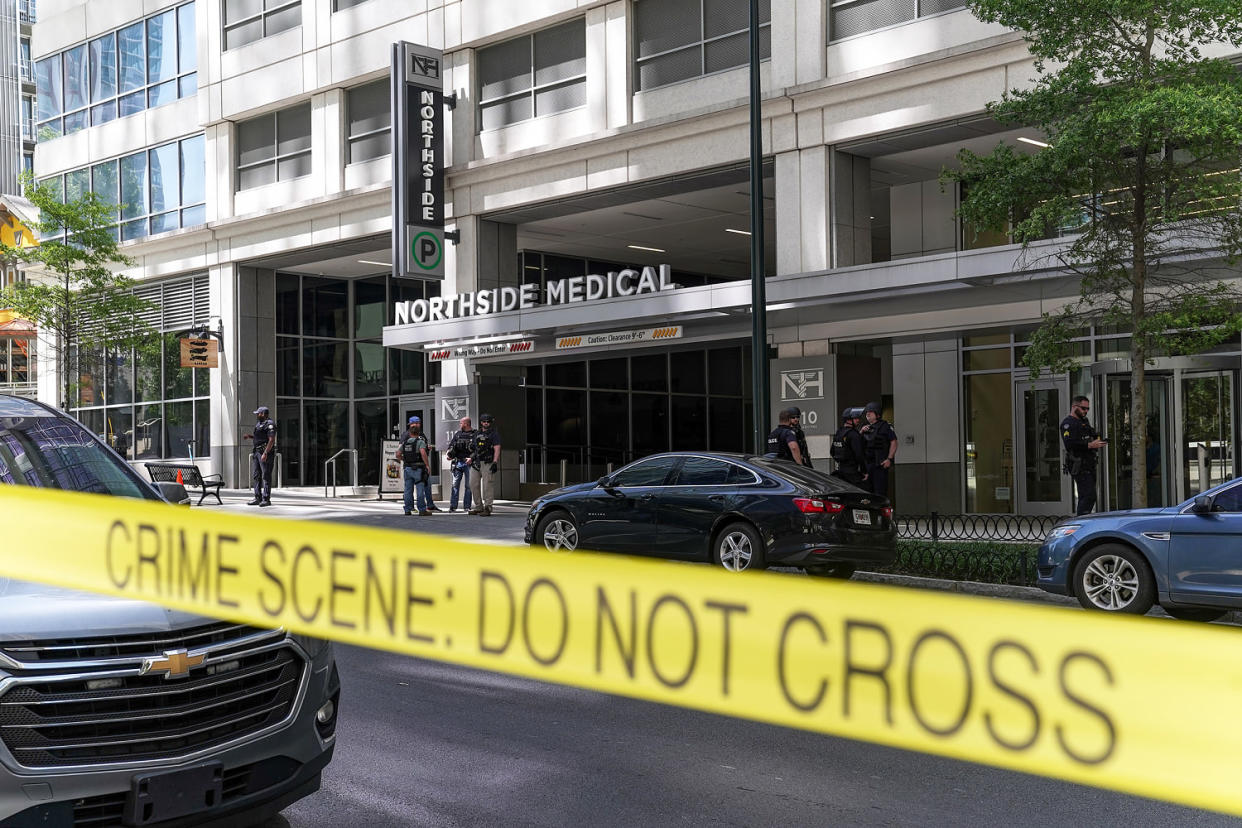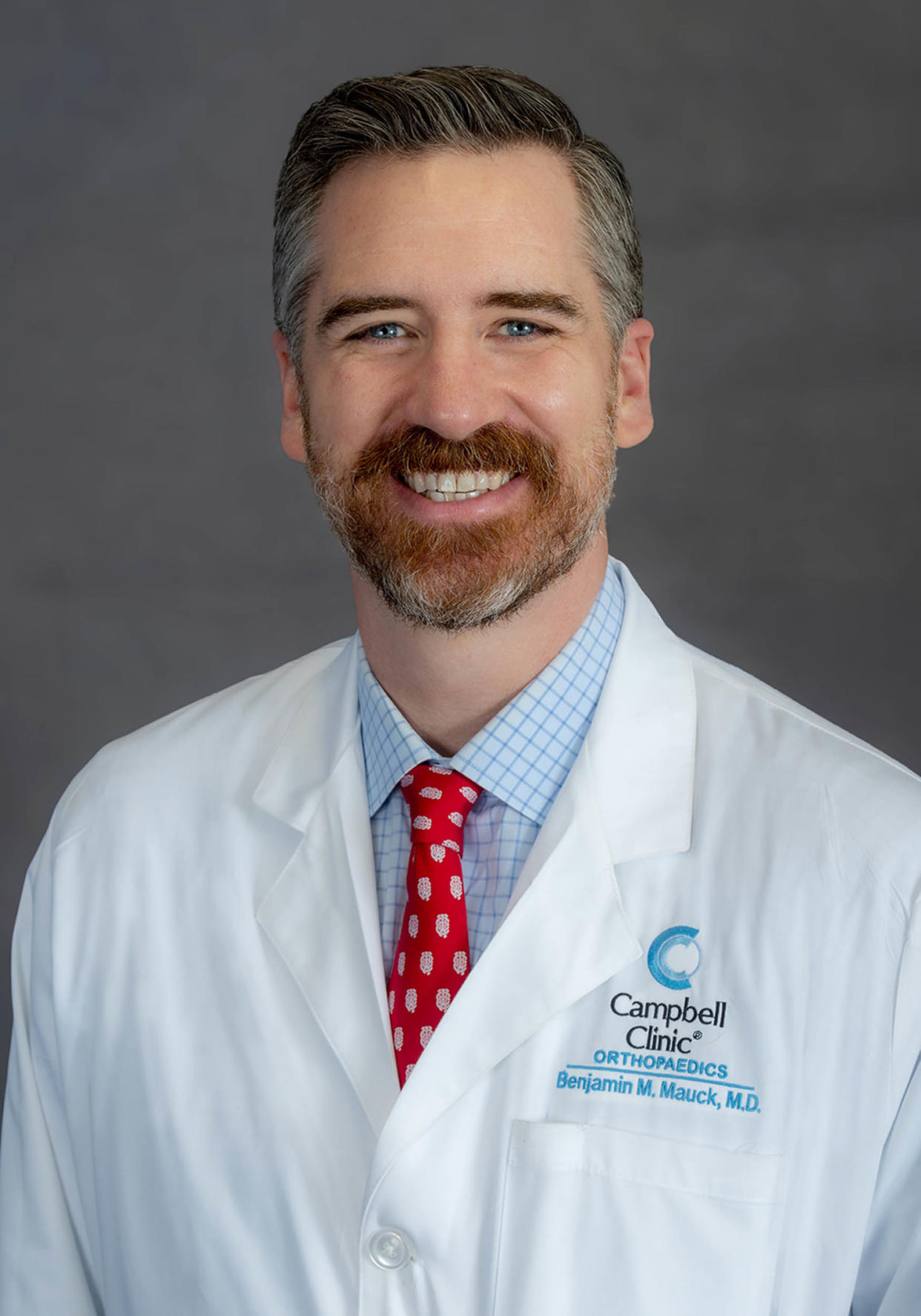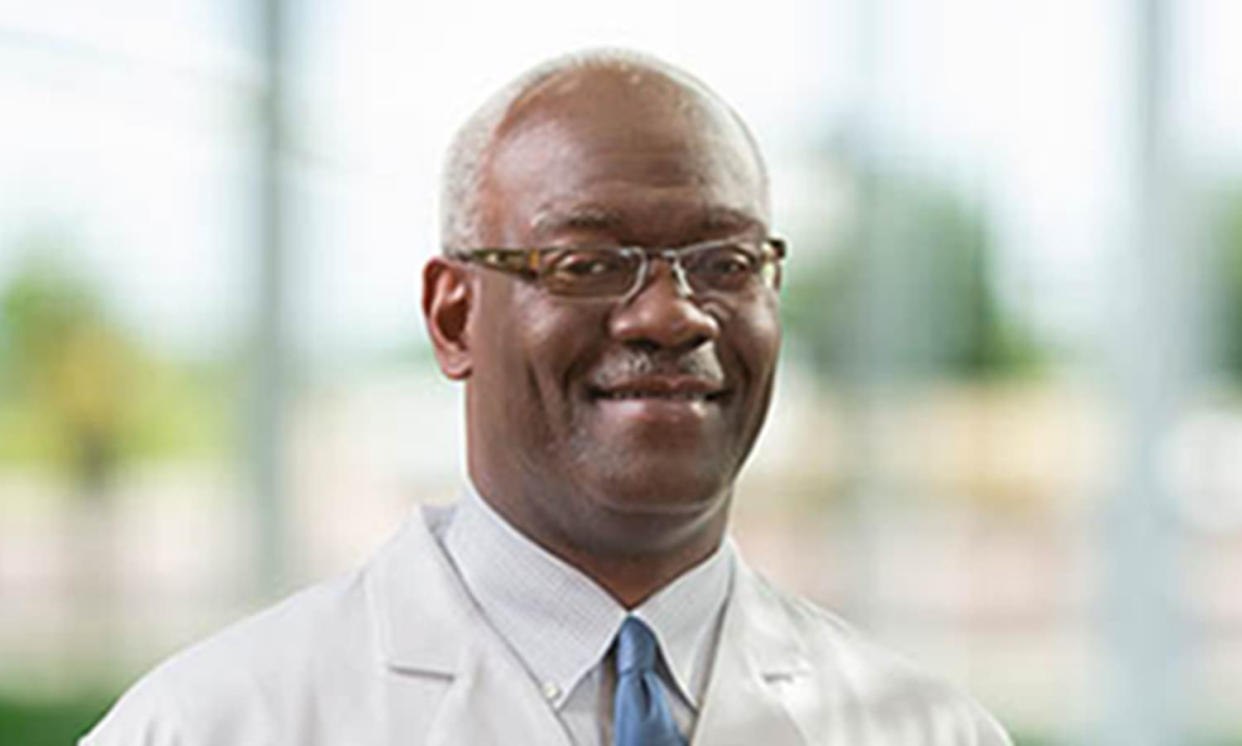Are you safe at the doctor’s office? Shootings in clinics leave patients, physicians on edge
Michael Palko was in the waiting room of his doctor’s office for a routine post-shoulder surgery appointment when he suddenly noticed a commotion on the street outside.
Looking out the window of the Atlanta medical building, he saw emergency vehicles pulling up and police shutting down the road. Other patients were getting ready to leave his doctor’s office, but employees stopped them and ushered everyone to a corner room away from the front doors.
“A mother and daughter were trying to walk out and all of a sudden, the (staff) shut the doors and it was like, ‘There is a shooter in the building,’ and we all had to lock down,” Palko, 37, tells TODAY.com.
“We went to the back room, and the little girl obviously didn’t know what was going on. I have a 5-year-old myself, so I was just trying to keep her calm because every grown-up was freaking out. So she and I played checkers on my phone.”
It was May 3, 2023, and a man who had an appointment on a different floor of the same medical building had opened fire in a waiting room, killing one woman and wounding four, NBC News reported. The alleged shooter, Deion Patterson, 24, is a former U.S. Coast Guardsman who wanted a medication to deal with anxiety and had a “mental break,” his mother told The Associated Press.

Patterson has been indicted on charges including murder, according to 11Alive, the NBC News affiliate in Atlanta. “A veteran with a history of mental health issues, Mr. Patterson is innocent until proven otherwise; his defense team is working tirelessly on his behalf,” a spokesperson for the Georgia Public Defender Council told 11Alive.
Palko and the other patients he was huddling with in the corner room that day made it safely out of the building after a SWAT team came and started pulling people out floor by floor. But his sense of safety was shaken.
“When I came back from my doctor’s appointment, I was kind of messed up. I did not want to go back,” he says. A doctor’s office “was the last place you would ever expect” a shooting, he adds.
Yet, it happened again two months later in a suburb of Memphis, Tennessee.

Dr. Benjamin Mauck, a hand surgeon, was fatally shot by a patient in an exam room inside a clinic on July 11, with police describing it as a “targeted” attack, NBC News reported. They have not released a motive. A judge has ordered a mental evaluation of the alleged shooter to determine if he’s competent to stand trial, reported WMC, the NBC News affiliate in Memphis.
Another doctor was shot and killed by his patient a year earlier in an orthopedics office in Tulsa, Oklahoma. Police said the gunman, who later killed himself, blamed the doctor for his ongoing pain after back surgery and targeted his orthopedic surgeon, Dr. Preston Phillips, NBC News reported. Three other people were killed in the medical office on June 1, 2022, including another doctor, a receptionist and a patient.

Aggression and intimidation from patients
A doctor’s office seems like one of the safest places to be, yet these recent incidents are raising concerns for patients and physicians.
They come as violent attacks against U.S. medical professionals have been on the rise for at least a decade, according to the American Medical Association.
A 2022 review of studies of the trend called violence against doctors “an urgent global problem.”
Nurses are also at high risk for assaults and violence in the workplace because they work so closely with patients, the American Nurses Association warns.
Overall, up to 38% of health workers will suffer physical violence at some point in their careers, the World Health Organization notes.
Psychiatrists and emergency medicine physicians typically see the highest rates of violence, but primary care doctors are also at risk, the American Academy of Family Physicians warns.
It calls the threat “a significant problem” and encourages health care facilities to have a security protocol in place.
Dr. Eleanor Lisa Lavadie-Gomez, a family physician in Iowa City, Iowa, says she and her colleagues are on edge whenever incidents like those in Atlanta happen, noting disgruntled patients can be found in any setting.
Since she began practicing medicine 13 years ago, she’s noticed patients are quicker to react, expect instant solutions to health problems and become easily frustrated when that doesn’t happen.
“I certainly notice and feel that tensions have risen all around, and I’m certainly on guard,” Lavadie-Gomez tells TODAY.com. She’s the medical director of home-based primary care for the U.S. Department of Veterans Affairs and a member of American Academy of Family Physicians. She is not commenting on behalf of those organizations, but shared her personal views.
“With people’s access to firearms, (violence) can happen anywhere with people’s easy frustrations and expectations for fast results, especially if it involves chronic pain and dependence on opiate medication,” Lavadie-Gomez adds.
The doctor has experienced “verbal aggression or intimidation from patients,” including a threatening voicemail message left by a patient who was promptly discharged from her practice, she wrote in a guest editorial for the American Academy of Family Physicians.
Lavadie-Gomez says the possibility of metal detectors in medical buildings was “the furthest thing from my mind” when she was training to be a doctor, but now the idea of patient security screenings before a doctor’s visit doesn’t seem so far-fetched.
“That’s what we saw before 9/11 and getting on airplanes, and now we’ve normalized all the things that we do just to be safe on airplanes. So it may get to the point where we’ve normalized a lot more safeguards just to be safe in medical offices,” she says.
Are doctors’ offices safe?
Eric Sean Clay, president of the International Association for Healthcare Security and Safety, calls the shootings in medical buildings in Atlanta, suburban Memphis and Tulsa “very extreme” events.
“Incidents where you see people bringing firearms and shooting doctors and health care providers — it’s on the rise, but I think it’s still a rarity,” Clay, who is also vice president of security at Memorial Hermann Health System in Houston, Texas, tells TODAY.com.
“They’re generally very isolated, very directed targeted violence ... (but) it really has raised staff anxiety at facilities across the country.”
More than 145,000 health care providers left the profession from 2021 through 2022, according to a report by Definitive Healthcare. If part of that is due to concerns about safety, Clay urges a focus on the issue before there’s a “continued exodus” of doctors.
People are generally very safe in a health care facility, Clay says. Most everyone in the health care industry is investing “very heavily” in security officers, video surveillance, and de-escalation training for health workers to recognize the signs of aggression early on and defuse them, he adds.
Patients might be less frustrated when they have developed a relationship with their doctor over time, but “too often, we are not given the time to spend with patients to build that relationship,” Lavadie-Gomez says.
Clay believes concealed weapons detection will be standard in most hospitals in the next five years. Newer AI-assisted devices will be smarter and allow people to move through much quicker than traditional metal detectors, he notes.
For smaller doctor’s offices that don’t have in-house security, the de-escalation training for staff to make sure patients are not getting agitated and upset will continue to be key, Clay adds.
When it comes to patients staying safe in a doctor’s office, he offered these tips:
When you’re entering a medical building, make note of exits so you know where to run if there’s an active shooter.
In the waiting room, pay attention to people around you. Are they verbalizing threats or escalating? Are they doing anything that would be of concern, such as displaying aggressive or threatening behavior?
Be present and aware: Don’t fixate on your phone and don’t have earbuds in both ears. You want to be able to hear raised voices, which may lead to violence or gunfire.
The shooting incidents are generally very targeted violence involving someone looking for a particular person. Move away from the sound of gunfire. You will have to decide if you will run, hide or fight.
Palko still remembers how scared everyone was in his doctor’s office in Atlanta as the active shooter situation played out.
“(I’m) realizing it could happen anywhere,” he says.
This article was originally published on TODAY.com
